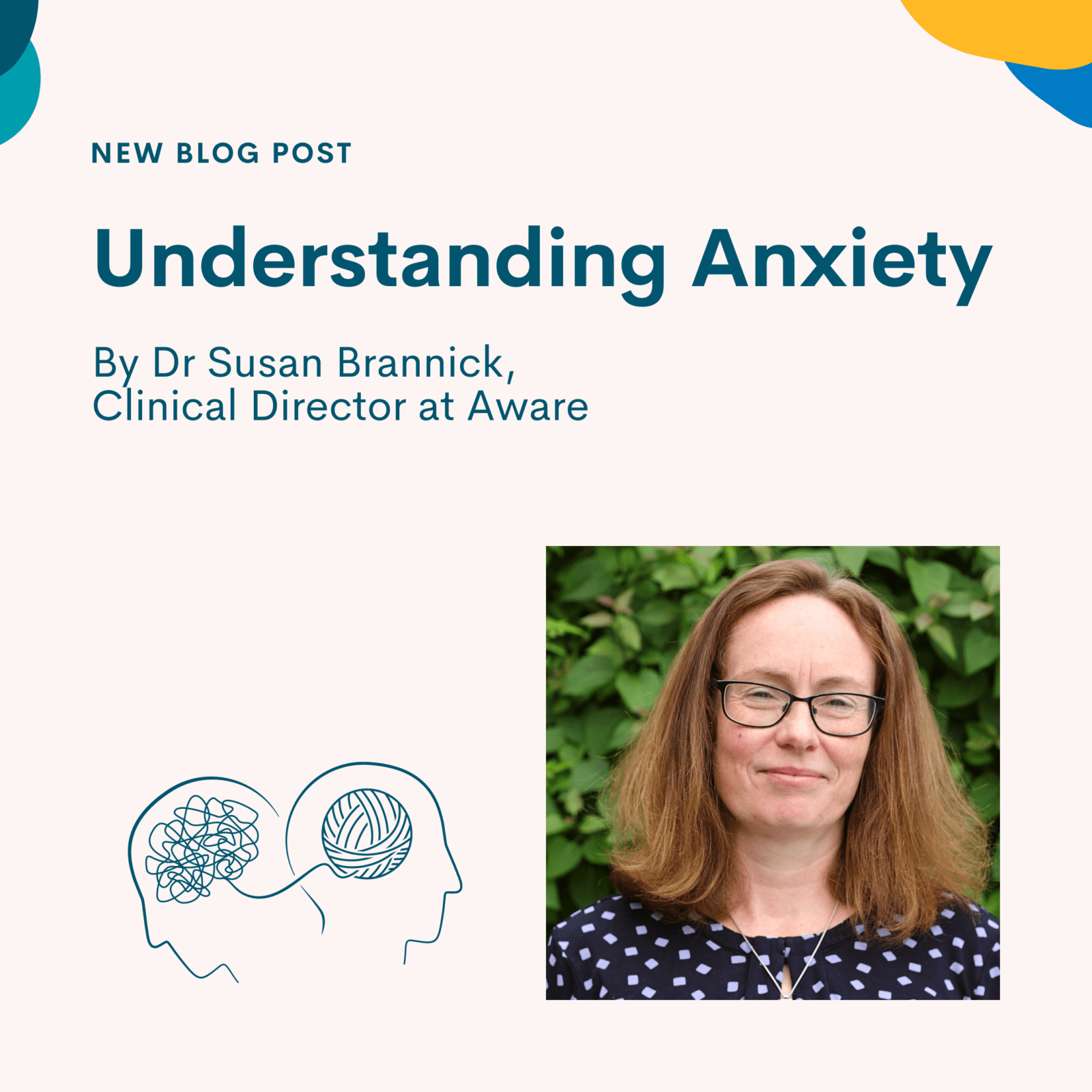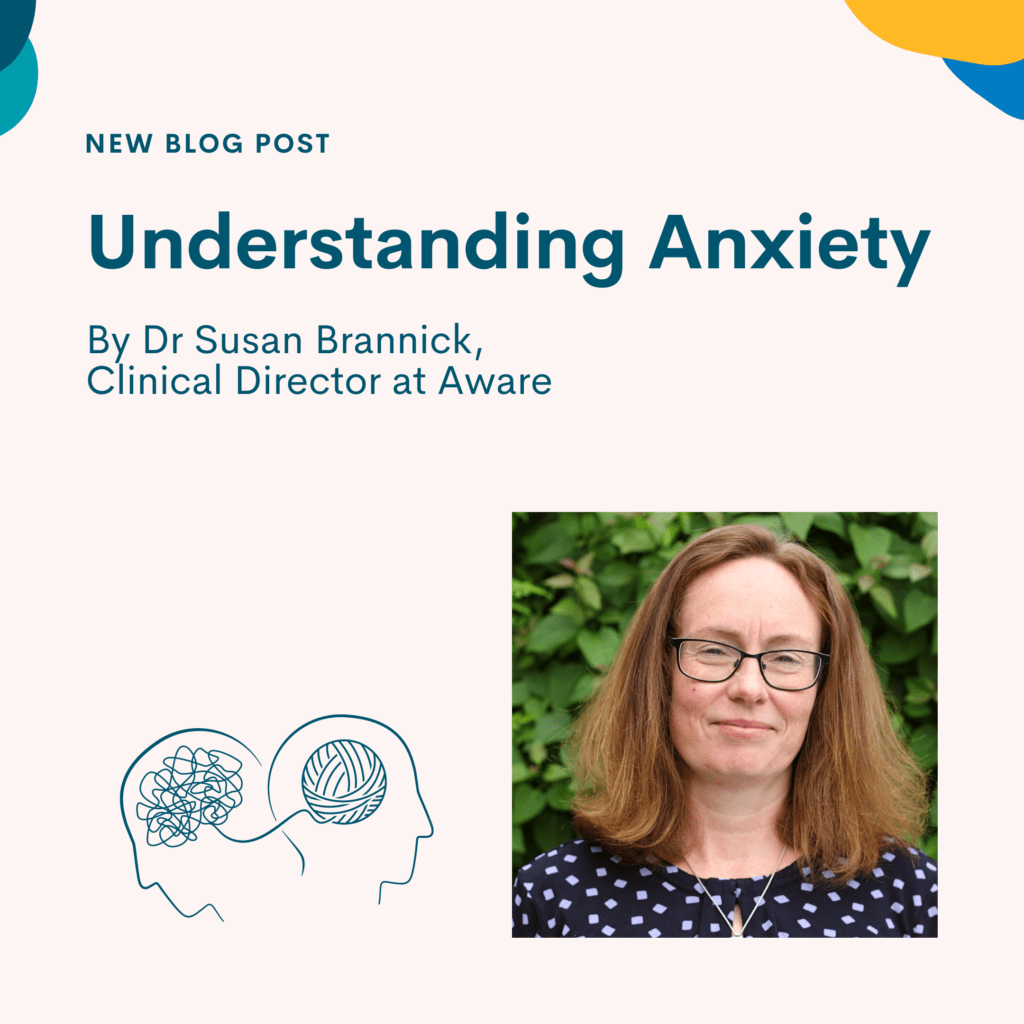
Anxiety disorders, according to the World Health Organisation are the most common mental health conditions experienced by people across the globe, impacting over 301 million in 2019. Anxiety is a commonly used term today but what exactly is it?
A shared theme across all descriptions of anxiety is that anxiety holds a specific function for us, i.e. to identify danger or threat and prepare the body to respond to it. One way of understanding this is through the following four steps. Firstly, a system prewired into the brain, and inherited from mammals, nonconsciously assesses danger and communicates this to the amygdala, or what is sometimes described as the fear centre of the brain. The amygdala then triggers the somatic and autonomic nervous systems, creating the emotion of fear for the person. When the body is now activated, we are then in fight, flight or freeze mode, and so ready to respond to the threat. As we are aware of this experience in the body, e.g. racing heart, sweating, tingling in the hands and feet etc, we might label the experience as anxiety (Damasio, 1999).
Our threat detection system that we have in common with reptiles and mammals predates the development of our prefrontal cortex (the part of the brain that was one of the later ones to develop, and what some posit as the centre of our ‘humanness’) and functions independently of it. So in this evolutionary based understanding of anxiety the idea is that we can be anxious in our bodies before we know in our thoughts/mind. This threat system has allowed our survival as a species over time and our own individual survival.
This understanding of anxiety is important in compassion focused approaches as it points to evolutionary aspects to our ‘tricky’ brains that were designed for surviving the predatory filled savannahs of prehistoric times and less specific to navigating the complexity of our modern world, where the threats we face are varied, highly complex and often unavoidable. Or in other words, this understanding offers the potential to step out of self-blame and self-criticism and the taking of over responsibility for how our bodies may sometimes respond which are outside of our control.
However the question arises that if fear and anxiety allow our survival and are so adaptative, why is anxiety such a problem for so many. A potential answer to this question from a psychodynamic perspective might argue that whilst animals have to avoid predators to survive, most humans must avoid the loss of relationships to survive, and so any feelings that threaten the safety of key relationships will evoke anxiety for survival. This will likely relate to what analysts describe as unresolved conflicts in early relationships which can then play out in current relationships, outside of our awareness. Therapies that centre the body (somatic therapies) posit that we may feel anxiety in part due to experiences that have become trapped in the body. A cognitive behavioural approach to anxiety argues that we feel anxiety because of what we think, i.e. our interpretations of a stimulus (outside events, thoughts, body sensations etc) as a threat, as well as what we do in threat mode (behaviours).
A CBT approach suggests that anxiety can become a problem when we overestimate the likelihood of something bad happening combined with overestimating how bad it will be, as well as underestimating our ability to cope with that threat. Anxiety can also be considered a problem if it starts to narrow your life to such an extent that you no longer do things that you enjoy (e.g. socialising with family or friends), or creates distance in your close relationships, or stops you doing what you need to do, (e.g giving a presentation at work), essentially if it becomes a barrier to living a rich and meaningful life. If you are considering what kind of therapy could help with anxiety, the above could be useful in highlighting the different focus these different types of approach will take.
One idea that is shared across most therapeutic approaches however is that avoidance keeps anxiety going and can make it worse in the long term. Avoidance feeds anxiety. A trauma informed lens would contend that for many people, avoidance may have been one of several strategies needed in early life to survive an unsafe home or harmful relationships but may not be so useful for the person’s current circumstances. In other words, if avoidance tends to be one of your ways of coping, you’ve probably learnt it somewhere along the way in your life in order to stay safe. Avoidance is also highly effective in eliminating anxiety in the short term. By not putting yourself in the anxiety provoking situation or leaving it earlier than you might have chosen to, can get rid of anxiety in one fell swoop. The downside of avoidance however is that you don’t get to find out whether the thing is as bad as you feared, or whether you would have coped better than you thought you would. So the alarm system never really gets to be re set and avoidance in this context ultimately narrows and constricts your life.
One way to begin reclaiming your life from anxiety is to start small. Go at your own pace and begin to take steps towards the things that matter to you – things that anxiety might have told you to avoid. Be as compassionate to yourself as you would to someone you love as you do this and as you build back your confidence. For more information on understanding anxiety and making changes in you how you manage it, have a look at our webinar on anxiety from April. Equally our education programmes including Mindfulness and Life Skills Programmes are based on evidence based approaches and/or principles that are proven to help people cope with anxiety.
This blog is by Dr Susan Brannick, Clinical Director at Aware as part of a monthly blog series.


